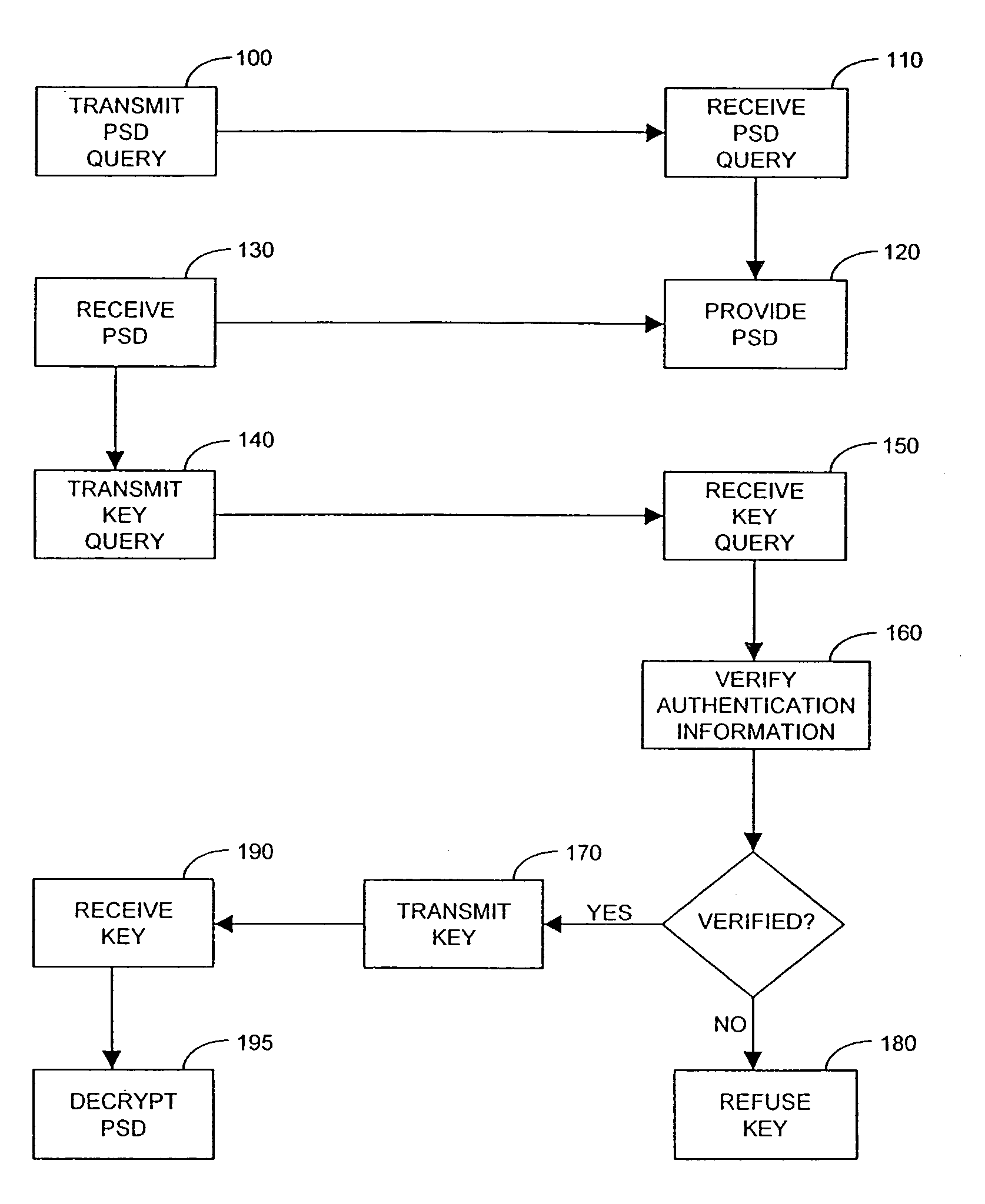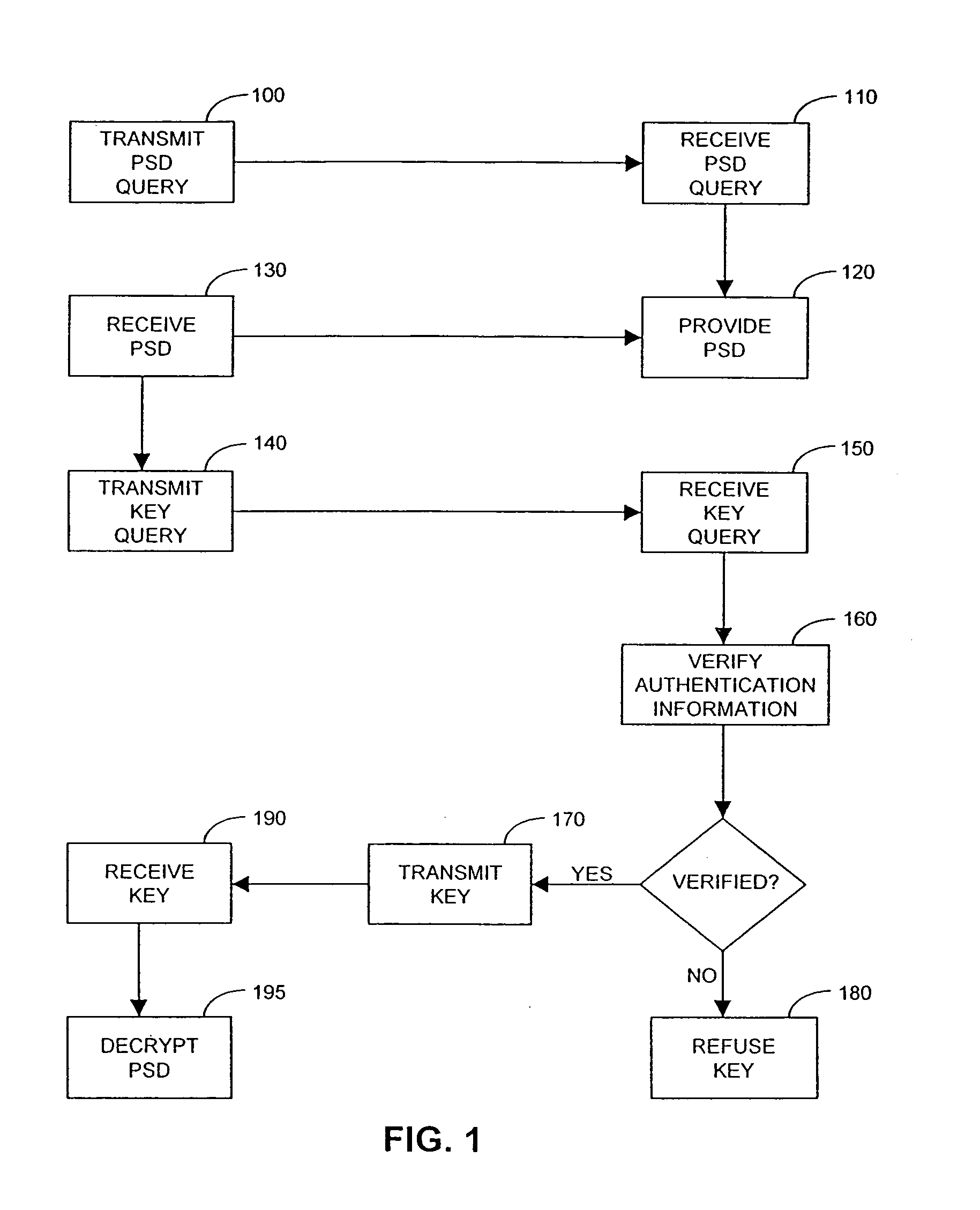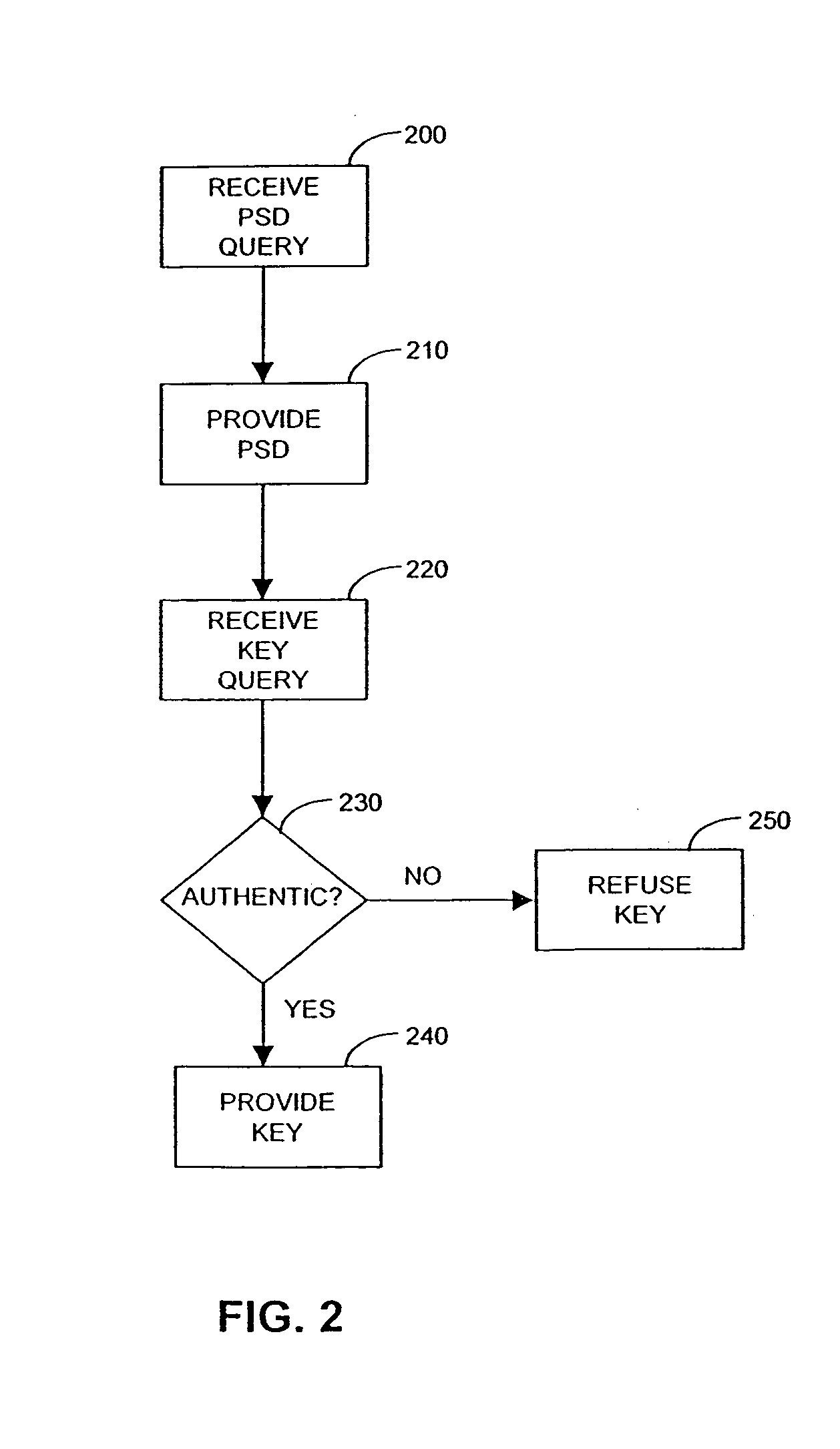System and methods for maintaining and distributing personal security devices
a personal security and device technology, applied in the field of cryptography, can solve the problems of insecure and vulnerable user authentication methods, inability to distinguish the key from the operand, and inability to encrypt the file. the key used to encrypt the file is not useful for subsequently decrypting,
- Summary
- Abstract
- Description
- Claims
- Application Information
AI Technical Summary
Benefits of technology
Problems solved by technology
Method used
Image
Examples
example 1
[0069]In this example, which is illustrated in FIG. 9, a user wishes to use a computer 900 to present credentials 910 such as a public key certificate or a digitally signed document to a host 920. The user first obtains a personal security device 930 from a personal security device server 940. In this embodiment, the personal security device 930 includes the user's encrypted credentials. The personal security device server 940 includes a personal security device database 950. The user then retrieves authentication information 960 from a token 970 and provides the authentication information 960 to an authentication server 980. The authentication server 980 is in operative association with a key database 990. If the authentication server 980 determines that the authentication information 960 is correct, the authentication server 980 then provides a key 995 to the personal security device 930. The computer 900 then employs the key 995 to decrypt the personal security device 930 and gai...
example 2
[0071]In this example, as illustrated in FIG. 10, a user wishes to form a secure network connection to a host computer 1000 from a public computer 1010. An example of a public computer is a workstation in a university's computing cluster. The user first obtains a personal security device 1020 containing encrypted information necessary for making a secure network connection, which the user then stores on a non-volatile medium 1030 such as the public computer's disk drive. In this example, the personal security device 1020 is obtained directly from the host computer 1000, but it may also be obtained from a separate computer such as an authentication server.
[0072]The user then applies a key 1040 to decrypt the contents 1050 of the personal security device 1020. The decrypted contents 1050 reside in volatile storage 1060. In this example, the key 1040 is a passphrase that the user has memorized. In an alternative embodiment, the key 1040 is obtained from an authentication token.
[0073]In...
example 3
[0074]In this example, as illustrated in FIG. 11, a user with an authentication token 1100 wishes to access the information in a personal security device 1110 stored on the hard disk drive 1120 of the user's computer. When the user wishes to decrypt the information stored in the personal security device 1110, the user queries an authentication server 1130 and presents authentication information 1140 from the authentication token 1100 to the authentication server 1130. Upon receiving proper authentication 1140, the authentication server 1130 then provides the user with a key 1150, which is then used to decrypt the contents 1160 of the personal security device.
[0075]In this example, the key 1150 and the decrypted contents 1160 are only maintained in volatile RAM 1170 and never written out to non-volatile disk 1120. Thus when the user turns off or resets the computer 1180, the key 1150 and decrypted contents 1160 are no longer accessible on the computer 1180. If the user wishes to acce...
PUM
 Login to View More
Login to View More Abstract
Description
Claims
Application Information
 Login to View More
Login to View More - R&D
- Intellectual Property
- Life Sciences
- Materials
- Tech Scout
- Unparalleled Data Quality
- Higher Quality Content
- 60% Fewer Hallucinations
Browse by: Latest US Patents, China's latest patents, Technical Efficacy Thesaurus, Application Domain, Technology Topic, Popular Technical Reports.
© 2025 PatSnap. All rights reserved.Legal|Privacy policy|Modern Slavery Act Transparency Statement|Sitemap|About US| Contact US: help@patsnap.com



